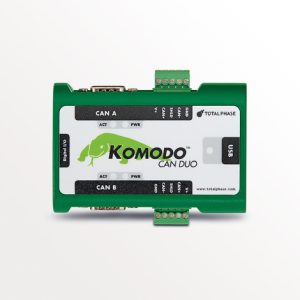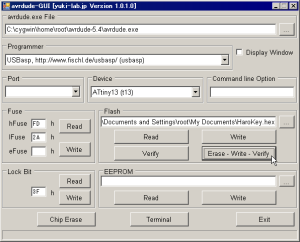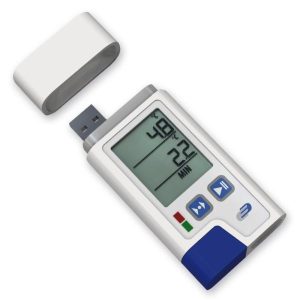Red Pitaya is a powerful open-source tool that can be used for various applications, from electronics and signal processing to scientific research and education. If you’re a maker, a student, or a researcher looking for a versatile and affordable platform, Red Pitaya is definitely worth checking out. In this blog post, we’ll explore what Red Pitaya is, what it can do, and why you should consider using it for your next project.
What is Red Pitaya?
Red Pitaya is a credit-card-sized development board that packs a lot of power into a small form factor. It is based on the Xilinx Zynq system-on-chip (SoC), which combines an ARM Cortex-A9 processor with a programmable FPGA (Field-Programmable Gate Array). This unique combination allows Red Pitaya to offer both the flexibility of a general-purpose processor and the real-time performance of a dedicated hardware accelerator.
Red Pitaya comes with a variety of built-in features, including two high-speed analog inputs (up to 125 MSPS), two high-speed analog outputs (up to 125 MSPS), and a variety of digital inputs and outputs. It also includes built-in Ethernet, Wi-Fi, and USB connectivity, making it easy to interface with other devices and the internet.
What can Red Pitaya do?
The versatility of Red Pitaya means that it can be used for a wide range of applications. Here are just a few examples:
- Electronics and signal processing: Red Pitaya can be used as a high-performance oscilloscope, spectrum analyzer, signal generator, and more. Its built-in analog inputs and outputs make it easy to capture and generate signals, and its FPGA can be programmed to implement custom signal processing algorithms.
- Scientific research: Red Pitaya can be used in various scientific fields, such as physics, biology, and chemistry. For example, it can be used as a data acquisition system to measure and analyze signals from sensors and detectors.
- Education: Red Pitaya can be used in the classroom to teach students about electronics, signal processing, and programming. Its open-source nature makes it easy to customize and extend, and there are many resources available online to help educators get started.
Why use Red Pitaya?
There are several reasons why Red Pitaya is an attractive platform for makers, students, and researchers:
- Affordable: Red Pitaya is much more affordable than many other development boards with similar capabilities. This makes it accessible to a wider audience and allows people to experiment and innovate without breaking the bank.
- Open-source: Red Pitaya is fully open-source, which means that its hardware design and software are freely available for anyone to use and modify. This makes it easy to customize and extend, and encourages collaboration and innovation.
- Versatile: Red Pitaya’s combination of a general-purpose processor and FPGA makes it a versatile platform that can be used for many different applications. This means that you can use it for multiple projects without needing to buy different boards for each one.
- Easy to use: Red Pitaya comes with a user-friendly web interface that allows you to control its various features using a web browser. This makes it easy to get started and eliminates the need for complex software installations.
Conclusion
Red Pitaya is a powerful and versatile open-source development board that offers a lot of value for its price. Its combination of a general-purpose processor and FPGA makes it suitable for a wide range of applications, and its affordability and open-source nature make it accessible to a wider audience. Whether you’re a maker, a student, or a researcher, Red Pitaya is definitely worth considering for your next project.
Sure, let me provide you with more information about Red Pitaya and its features.
Red Pitaya’s Hardware Features
Red Pitaya comes with a range of hardware features that make it a versatile platform for various applications. Some of its notable hardware features include:
- Dual-core ARM Cortex-A9 processor: Red Pitaya’s ARM Cortex-A9 processor provides a high-performance computing platform that can run Linux-based operating systems.
- Xilinx Zynq FPGA: Red Pitaya’s FPGA provides the platform with a programmable hardware accelerator that can be used for high-performance signal processing.
- High-speed ADC and DAC: Red Pitaya’s dual 14-bit ADCs and dual 16-bit DACs allow for high-speed analog signal acquisition and generation, with a maximum sampling rate of up to 125 MSPS.
- Digital I/O: Red Pitaya comes with a variety of digital inputs and outputs, including eight 50-ohm impedance digital input/output pins, and 16 programmable logic (PL) I/O pins.
- Connectivity: Red Pitaya comes with built-in Ethernet, Wi-Fi, and USB connectivity, making it easy to connect to other devices and the internet.
Red Pitaya’s Software Features
Red Pitaya comes with a range of software features that make it a user-friendly platform for various applications. Some of its notable software features include:
- Web interface: Red Pitaya’s web interface allows users to control the platform’s features using a web browser. The web interface provides a user-friendly environment for configuring and running experiments.
- Open-source software: Red Pitaya’s software is open-source, which means that it can be customized and extended by users to suit their specific needs. The open-source nature of the platform encourages collaboration and innovation.
- Community support: Red Pitaya has a large and active community of users and developers who provide support and resources for users. The community includes forums, documentation, tutorials, and example projects.
Applications of Red Pitaya
Red Pitaya can be used for various applications in electronics, signal processing, scientific research, and education. Some of its notable applications include:
- Oscilloscope: Red Pitaya can be used as a high-performance oscilloscope for measuring and analyzing analog signals.
- Spectrum analyzer: Red Pitaya can be used as a spectrum analyzer for measuring the frequency spectrum of signals.
- Signal generator: Red Pitaya can be used as a signal generator for generating various waveforms, including sine, square, and triangle waves.
- Data acquisition system: Red Pitaya can be used as a data acquisition system for measuring and analyzing signals from sensors and detectors in scientific research.
- Educational platform: Red Pitaya can be used as an educational platform for teaching students about electronics, signal processing, and programming.
In conclusion, Red Pitaya is a powerful and versatile open-source platform that provides a cost-effective solution for various applications in electronics, signal processing, scientific research, and education. Its combination of hardware and software features makes it a user-friendly platform that encourages collaboration and innovation. Whether you’re a maker, a student, or a researcher, Red Pitaya is a great platform to consider for your next project.
Advantages:
- Versatility: Red Pitaya is a versatile platform that can be used for various applications, including oscilloscopes, spectrum analyzers, signal generators, data acquisition systems, and educational platforms.
- Open-source: Red Pitaya is open-source software, which means that it can be customized and extended by users to suit their specific needs. The open-source nature of the platform encourages collaboration and innovation.
- Cost-effective: Red Pitaya is an affordable platform compared to other high-end laboratory equipment, making it a cost-effective solution for various applications.
- User-friendly: Red Pitaya’s web interface provides a user-friendly environment for configuring and running experiments, making it accessible for users with different levels of expertise.
- Large community: Red Pitaya has a large and active community of users and developers who provide support and resources for users. The community includes forums, documentation, tutorials, and example projects.
Disadvantages:
- Limited processing power: Although Red Pitaya’s dual-core ARM Cortex-A9 processor provides a high-performance computing platform, it may not be sufficient for some applications that require more processing power.
- Limited FPGA resources: Red Pitaya’s FPGA provides a programmable hardware accelerator, but it has limited resources compared to larger FPGAs.
- Limited analog bandwidth: Red Pitaya’s analog bandwidth is limited to 50 MHz, which may not be sufficient for some applications that require higher bandwidth.
- Limited number of analog inputs: Red Pitaya comes with two analog inputs, which may not be sufficient for some applications that require more inputs.
- Limited software support: Red Pitaya’s software is open-source, which means that it may not have the same level of support and documentation as commercial software.
Overall, Red Pitaya is a powerful and versatile platform that provides a cost-effective solution for various applications. Its advantages, including its versatility, open-source nature, cost-effectiveness, user-friendliness, and large community, make it an attractive platform for many users. However, its limitations, including limited processing power, FPGA resources, analog bandwidth, number of analog inputs, and software support, should be considered before choosing it for a particular application.










